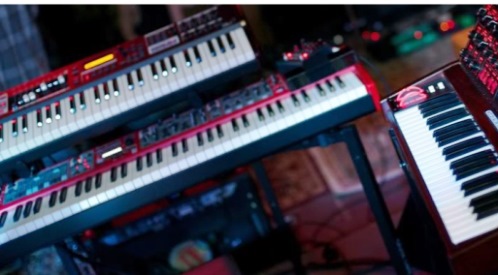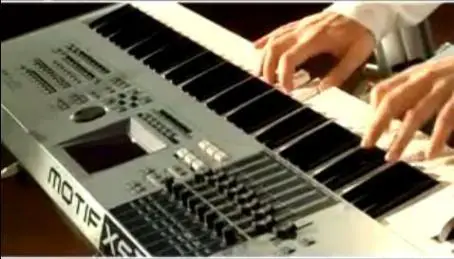
Introduction
When you reach the stage wherein you are exploring various music workstations and considering buying one, you are no longer just a keyboard or a Piano player. You have grown as a musician and now possess composing, arranging and music technology skills.
Now you need something which will help you to give shape to all the musical ideas in your head…and that is where the Keyboard Music workstation fits in.
A Music workstation keyboard, also known simply as a workstation, stands out both, in a professional studio and on stage. With impressive ease of use, and amazing sounds, these keyboards are the right instrument for both environments.
Highlights
- A music workstation keyboard is all you need to start producing professional quality music. You get a huge library of sounds, enhanced sampling, and easy DAW integration
- These are available in 61 keys, 73 or 76 keys and 88 keys. The number of keys you want to choose depends on your preferences.
- Tons of high quality sounds, which further can be tweaked, additional content available through separately sold flash memory
- Easy integration with computer/DAW/recording software.
- Remote function: The transport function buttons and faders become controllers
You can find several forum sites where end users, sound programmers, software developers and product support specialists come together to discuss how these professional keyboards can be used to the fullest for music production.
Going Back in Time
Musicians started using Workstations, way back in the 1970s, when the keyboards combined synthesizers and sequencers under one box.
With advancements in computing related technology (faster processors, software, memory storage, etc.) the music workstations also started becoming more powerful.
Korg M1 was a very popular model back in those days (used by the likes of Vangelis, Madonna, and more).
Today’s keyboard workstations are far more impressive.
Why Use a Music Workstation?
A music workstation has everything you need for your music creation as well as performance needs.
A Keyboard workstation is a synthesizer, sequencer, sampler, sound module and a musical keyboard, everything rolled into one! It is a self contained music production tool which lets you compose music using just one piece of equipment.
It can be described as a portable music studio!
The basic aim of having a workstation is simple, you do not want to leave your instrument when you get that brilliant idea in your head. You need all the tools at one place to turn that idea into a masterpiece.
Workstations are used by recording studios, producers, film composers, and touring musicians. Endless sounds to choose from, as well as powerful sequencing, make workstations especially versatile onstage.

Features
Any keyboard workstation should normally contain the following features:
- Multi-track Sequencing: lets you record and edit your composition, including vocals Most Workstations have 16-track sequencers.
They also have on-board editing software that lets you edit/mix your music directly from the keyboard’s display screen (rather than having to do it on the computer).
When connected to a computer, workstations can double as DAW plugins.
Most workstations allow for digital sampling.
Oscillators, arpeggiators, filters, pitch modulation wheels, variety of effects are commonly found. - Drum machine: record, edit and play rhythm tracks
- Synthesizer: lets you create, edit, store and play back the sounds
- Sampler: lets you record external sounds, manipulate and play back the sounds
- Effects device: apply effects like reverbs, delays etc. at both the global level as well as at channel specific levels
- Controllers: includes knobs, switches, faders, ribbon, etc. to let you change each and every parameter of sound
Some musicians do connect workstations to computers (via MIDI or USB) but workstations by themselves are stand-alone machines that house a huge number of built-in sounds, samples, effects and tools.
Music Workstation Keyboards – Popular Brands & Choices
Roland, Korg, Yamaha are the major players in the Music Workstations segment. Yamaha, which did not have any presence in the Music Workstations market, entered with a bag few years back with the Motif ES (It just tore apart the competition at that time.)
Korg and Roland had no choice but to innovate and come with better products. Korg came out with the Triton Extreme, which made it cheaper to own a Triton. Roland came with the super Fantom X series, which included audio recording as well.
These three continue to improve their flagship products and continue to offer more at competitive prices. Of course, its you who stand to benefit from this competition as a consumer!
The more popular music workstations include Korg’s Kronos & Krome, Roland’s FA & Juno, and Yamaha’s MOXF. Yamaha is also projecting its Tyros as an arranger workstation though it is more of an arranger keyboard and not as powerful as the Motif.
Like any keyboards, even workstations come various sizes – 61 keys, 88 keys, and compact models. Some have weighted “piano action” keys, while others have semi-weighted keys.
You can checkout the latest offerings from these here.
Ready to be used On stage
Keyboard workstations can also be used for live performances. As a keyboard player you will normally create combination of sounds and assign it to the various keys or you will create sequences which you may use later during your live performance.
Once on the stage, you can apply effects or use the controllers to modulate the sounds on the fly without needing any external gear.
Accessories for Music Workstation
Here are some keyboard accessories to consider for your music workstation keyboard considering that you will be doing a lot of onstage performances, in addition to using it in the studio.
First of all get yourself a nice keyboard stand and if you are going to play more of the piano, a good padded keyboard bench.
For working on demos or creating music at home, you may wat to get yourself a nice pair of closed headphones that isolates sound well.
A good sustain piano style pedal will suit piano players and a volume plus expression pedal will come handy on stage.
High-quality audio cables are always required if you are a regular performer onstage. Keeping that in mind, instrument cables will benefit you on the stage or in the studio.
For getting the best sounds from your setup, you can go in for good powered monitors for studio use and for your onstage setup, get yourself a powerful PA system / keyboard amplifier
Related Posts
Use the Keyboard Workstation as a Touring Machine!
Is a professional arranger keyboard more apt for your needs?
Back to Home page from Music Keyboard Workstations
KeytarHQ editorial team includes musicians who write and review products for pianists, keyboardists, guitarists & other musicians. KeytarHQ is the best online resource for information on keyboards, pianos, synths, keytars, guitars and music gear for musicians of all abilities, ages and interests.



Leave a Reply